book review
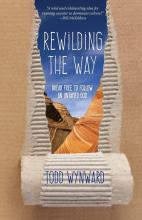
REMEMBER THE thrill that went through you when C.S. Lewis told you Aslan is not a tame lion? I sometimes forget about this untamed image of God when ensconced in my “safe” Christian community.
In his recent book Rewilding the Way: Break Free to Follow an Untamed God, Mennonite minister and permaculture practitioner Todd Wynward reminds us of the importance of the wilderness in the Bible and in Christian history. Wynward calls his book an “unapologetic rallying cry to rewild a Christianity that has become terribly tame.”
He argues for a third way of enacting discipleship: not the radical renunciation of ascetics, open only to the childless and unattached, nor a life of unexamined affluence, but a life of spiritual resilience where we develop strong, place-based communities of praxis who care for one another and creation through the power of the Holy Spirit. He invites us to remember the transformation that occurs through the wilderness testing of Moses and the Israelites, many of the prophets, John the Baptist, Jesus, the apostle Paul, and the desert fathers and mothers. In the wilderness we learn about “enough,” trusting God, and how much we need one another. We learn about our paradoxical smallness and value to our loving God.
A text like this could reinforce Christian contemplative navel-gazing and a personal experience of God as only available in the sublime elements of nature, unreachable in a sullied built environment. Wynward avoids this pitfall by focusing on community and a covenanted right relationship with God, others, and creation. He discusses environmental justice, activism, and urban projects that rewild spaces closer to home.
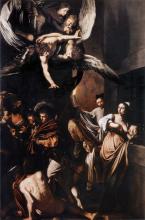
If Pope Francis wanted a single image to illustrate the special Year of Mercy that is the current focus of his ministry and, indeed, the theme at the heart of his pontificate, he could do no better than choosing an underappreciated masterpiece by the thrilling Italian artist known as Caravaggio.

At 17, AS I SAT in a comprehensive health center in Namibia, a health care worker told my visiting religious group what the center really needed from outsiders to improve the care they offered. As a peer health educator at my high school, I entered the facility thinking I knew the universal cure for preventing HIV infection—education—and feeling sad that so many places in the world did not yet have access to the life-saving drugs because they could not afford them. I was naïve and incorrect on many fronts.
They had the drugs, the health worker told us, and they had a well-developed education plan both for prevention and antiretroviral therapy. What they really needed right then was baby formula, to prevent HIV-positive mothers from passing the virus on to their newborns. So the next time we wanted to donate to the organization, he said, please send formula or the money to purchase some, instead of knitted newborn hats or volunteers ready to paint the facility walls.
Susan R. Holman, in her book Beholden: Religion, Global Health, and Human Rights, provides valuable narrative, analysis, and information that can similarly open the eyes of religious leaders about helpful, sustainable, and respectful ways to approach health-related needs throughout the world. Unlike many global-health academics and activists, who simply dismiss religious efforts as destructive or limited, Holman asserts that religion must be incorporated into global-health initiatives “because faith matters to the large majority of people who are poor in this world.” Global-health initiatives cannot ignore the influence faith has on health, moral decision-making, and community structures.
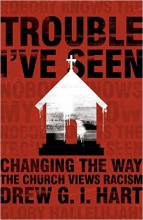
Since the beginning of the modern era almost 500 years ago, Western culture has been marked by a distinct aversion to history. Thus we have come to narrate our lives primarily through our stories as (seemingly) autonomous individuals, instead of through the social stories of the peoples and places to which we belong. One of the unfortunate consequences of this shift is that we often become blind to the socioeconomic narratives that have set the stage for our present lives.
One of these is white supremacy, which has shaped the geographical, educational, and economic systems of our land over many generations and played a formative role in the life of almost every American. In his excellent new book, Trouble I’ve Seen: Changing the Way the Church Views Racism, Drew Hart turns our attention to this story and particularly to the ways it misshapes our Christian faithfulness. Hart begins the book with a description of how racialized our lives are. Historically, nonwhites were excluded from many important spaces in U.S. public life: schools, governmental positions, and even churches. Although few, if any, of these spaces today explicitly exclude nonwhites, our socioeconomic systems are rooted in these earlier eras and continue to promote a highly segregated way of life. “When we can be honest about how our entire society is deeply racialized,” Hart says, “we will be ready to move forward.”
Hart reminds us that race is not simply about the color of one’s skin but also about power and the question of who gets to dictate the course that our society will follow. Early in the book, he spends a chapter exploring how our understanding of Jesus is often too white. We are inclined to imagine Jesus as an influencer, one who works in the upper echelons of our hierarchical society and who has the power to control the course of society. Hart emphasizes that this is not the Jesus that we find in the gospels, who aligned himself with the marginalized and who mostly rejected hierarchical society. “Where the old order dominated and violently lorded over others,” Hart observes, “the kingdom of God arose from the bottom, margins, and cracks of society, freely inviting people to share in the peace and justice of God made available in the presence of Jesus.”

HEBERT ROBINSON Marbury’s Pillars of Cloud and Fire: The Politics of Exodus in African American Biblical Interpretation achieves the distinction of providing fresh insight in well-covered territory. Marbury, with imagination and impressive intellectual range, explores the uses of Exodus by African Americans in struggles for freedom, respect, and full inclusion into the democratic mechanisms of American political life.
For the past four decades, scholars in fields as disparate as African-American religious history, preaching, rhetoric, constructive theology, and American studies have noted a fundamental duality: White Christian immigrants perceived Britain as Pharaoh and America as the Promised Land; enslaved Africans, by contrast, saw America as a strange land in which white Christian immigrants were Pharaoh. Instead of covering this important though beaten path, Marbury employs an alternative strategy.
What’s his take? Marbury’s book acknowledges this rich history, specifically the first two generations of African-American biblical scholarship. Then he pivots quickly to define cultural studies as a foundational discipline anchoring his reading of the text. What this means is that Marbury unpacks the significance of scripture by assessing the canonical account as well as the life-world and aims of individual interpreters who employ what Hebrew Bible scholar Renita Weems calls reading strategies for the text. The arc of Marbury’s analysis stretches from the antebellum era to the black power movement.
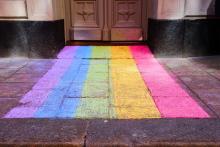
Among the people who Lee studies in Rescuing Jesus is Sojourners’ own Chief Church Engagement Officer Lisa Sharon Harper, who confronted the overwhelming whiteness of her evangelical campus ministry. Despite hearing otherwise from her religious leaders, she knew her whole identity as an African-American woman with a commitment to racial justice was an essential part of her faith.
And many other leaders are featured: Jennifer Crumpton, who grew up hearing conservative gender complementarian teachings, now challenges the patriarchal structures of evangelicalism through her ministry and call to lead. And there’s Will Haggerty and Tasha Magness and other LGBTQ students at Biola University, a private Christian college with explicitly anti-queer policies. Despite the threat of expulsion, these students founded an underground network of support and solidarity for LGBTQ Biolans.

Imagine a test on world religions that asks this question: “Who founded Christianity?”
Jesus, right? Wrong.
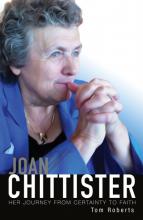
MANY KNOW Benedictine Sister Joan Chittister as a prophetic spiritual writer and an engaging speaker; others call to mind her sister-leadership, her feminism, and her defiance of the Vatican. What Tom Roberts’ startling new biography uncovers, with the full cooperation of Sister Joan, are the horrors of a childhood filled with violence and poverty and the vivid details of her growth as a spokesperson for women’s equality in the Catholic Church.
The book’s three parts each deal with a phase in Chittister’s spiritual growth. The early years, with harrowing accounts of protecting her mother from a brutal and alcoholic stepfather and entering an Erie Benedictine community still steeped in old-world traditions, conclude with Chittister receiving her Ph.D. from Penn State, a first for her order.
Part two chronicles the tumultuous middle years when religious communities everywhere were adapting to a radically changing world. Chittister grew in critical consciousness about the role of women in the church and served three terms as prioress of her order, helping her community to move from its traditional vocation of teaching to serving a changing neighborhood. Their projects, under the umbrella term of peacemaking, took the form of urban gardens, art workshops, afterschool programs, peace centers, houses of hospitality, and soup kitchens, and eventually to the formation of online communities of monastic spirituality. For those who haven’t read Chittister’s own writing on these years, Roberts could have included more information on pre-Vatican II convent life here.
Part three finds Chittister moving beyond the community of U.S. sisters to worldwide leadership, ably assisted by her lifelong friend Sister Maureen Tobin. Chittister traveled on peacemaking journeys to Palestine and Israel, worked in Haiti and the Philippines, and took part in several worldwide conferences, including the 1995 U.N. World Conference on Women in Beijing and an ecumenical conference in Nairobi. All this while still plagued by the ravages of childhood polio!
In 2001, Chittister was invited to speak at the first international conference of Women’s Ordination Worldwide, to be held in in Dublin. Vatican officials ordered her prioress, the late Christine Vladimiroff, to “forbid and prohibit” Chittister’s participation. Roberts details the courage of Vladimiroff and the community as they collectively resisted the Vatican in support of Chittister.
When Chittister addressed the Dublin conference about discipleship, she asked “What do the people really need?” answering that “they need the sacred, not the sexist ... more prophets of equality, not more pretenders to a priesthood of male privilege. They need discipleship, not canonical decrees.” In her assertion that Christian discipleship will, sooner or later, “tumble a person from the banquet tables ... to the most suspect margins of both church and society,” she foreshadowed some of Pope Francis’ wisdom. She begged that the question of women as priests be seriously considered in papal circles, lamenting that it had not yet happened. (It still has not yet happened.)
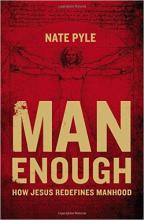
MOST CULTURES have ways to initiate boys into manhood. Being a man is thus seen as an earned status that must be maintained, which can generate tremendous anxiety. (This is similar to what Simone de Beauvoir observes in The Second Sex about being a woman—one is not born but rather becomes one.) I’ve felt this anxiety myself in social spaces where masculinity is outside of the norm: I’m forced to think through how I am a man and what that means.
Nate Pyle confronts some of this anxiety in Man Enough. He explores how being rooted in Christ can seat the Christian man’s identity more firmly in Jesus. Rather than trying to frantically maintain any particular form of masculinity, we can rest our identity in Christ.
This is key to freeing us from ridiculous posturing and status games. Pyle fleshes his argument out not only through scripture and ethical reflection but also by powerfully recalling his own personal development as a man.
Still, as Pyle puts it, “saying Jesus defines what it means to be a man is easy; actually defining manhood in light of Jesus is harder.” We have so many pictures of Jesus in the New Testament, from the righteously angry Jesus condemning the false teachers of his day to the Christ restraining his power and submitting to death on a cross. Perhaps, Pyle argues, this is the point: Jesus is complex, so any picture of how to be a man (or a woman) needs to be similarly complex.
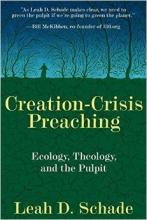
PREACHING A SERMON on an issue debated in the public square: It’s complicated. Make that issue the climate crisis, and it’s really, really complicated. Even in congregations where climate change is not broadly disputed, a pastor faces the challenge of crafting a gospel-informed message that doesn’t swing either to naïve ways we might “make it all better” or pessimistic apathy.
But there’s evidence it’s worth the work and risks: In terms of policy issues, climate is one where a clergy leader’s word has proven impact. According to a 2014 survey by the Public Religion Research Institute and the American Academy of Religion, Americans with a clergy leader who “speaks at least occasionally about climate change” are more likely to be concerned about the issue than those “who attend congregations where the issue is rarely or never raised.”
So where does a preacher begin and with what goals?
Leah D. Schade’s Creation-Crisis Preaching equips pastors to name the present crisis and preach a call to action and healing. She describes one theological path to sermons infused with both testimony of the sacredness of God’s creation and our call to be agents of the world’s healing. Schade is a Lutheran pastor and anti-fracking activist who has also done doctoral work focused on homiletics and ecological theology. Appropriately, in this book she explores both the theoretical underpinnings and the practicalities of climate-crisis preaching. Her approach is clear-eyed about the current dire situation of creation, but also committed to hope: “Because I am a Lutheran homiletician,” she writes, “I am compelled to find a way to preach the eco-resurrection, even when most signs indicate that Good Friday may be the fate of our planet.”
Schade sketches the sometimes contentious and damaging history of religion’s relationship to the environment, some different approaches to ecological theology, and a “‘green’ hermeneutic for interpreting scripture.” She explores briefly how social change theory can inform the vocation of preaching and the role sermons might play in a social movement.
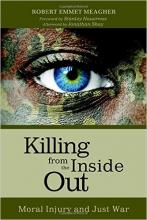
DAYS AFTER 9/11, a just war philosopher and I were interviewed on Christian radio. I’m a pacifist who served on peace teams in Nicaragua and Iraq. My co-interviewee called for waging war on “terrorists” because we must kill our enemies while loving them. My plea to listen to Jesus and victims of war was scorned.
Two compelling recent challenges to Christian justifications for war are Robert Emmet Meagher’s Killing from the Inside Out: Moral Injury and Just War and Stan Goff’s Borderline: Reflections on War, Sex, and Church.
Meagher, a humanities scholar, incorporates listening to veterans of war into his work. Goff writes as someone who was a soldier before being transformed by Jesus.
Three issues in both books—just war, masculine sexual violence, and moral injury—resonate with my peace team encounters with war. Through very different approaches, Meagher and Goff offer the best reflection on these concerns that I’ve seen; both rightly implicate the church.
First, just war has a sordid rather than sanctifying history. Meagher’s survey of ancient literature, scripture, and Christian history reveals its legacy as antithetical to Jesus’ teaching: “Since the time of Constantine ... just war doctrine has served to license and legitimize state and ecclesiastical violence and to draw a convenient, if imaginary, line between killing and murder.”

BY NOW you’ve probably heard of a little book of hard analysis and eloquent perspective that came out this summer, Between the World and Me (Spiegel & Grau) by Ta-Nehisi Coates. (If not, get thee to a book store or library.) Here are some other books—some out this fall, others from earlier in 2015—that you’ll want to know about.
Fresh This Fall
With Understanding Mass Incarceration: A People’s Guide to the Key Civil Rights Struggle of Our Time (The New Press), James Kilgore has written an accessible field guide to an urgent topic. Geraldine Brooks gives King David the novel treatment in The Secret Chord (Viking). Aviya Kushner plumbs translation inThe Grammar of God: A Journey into the Words and Worlds of the Bible (Spiegel & Grau). Kathryn J. Edin and H. Luke Shaefer profile families enduring poverty in $2.00 a Day: Living on Almost Nothing in America (Houghton Mifflin Harcourt). Inventing American Religion: Polls, Surveys, and the Tenuous Quest for a Nation’s Faith (Oxford) is Robert Wuthnow’s case for why sometimes data is dubious.
In the children’s picture book Mama’s Nightingale: A Story of Immigration and Separation (Dial), Edwidge Danticat tells the stories of many through one little girl. Sarah Bessey tells us to be not afraid of questions inOut of Sorts: Making Peace with an Evolving Faith (Howard Books). Women write their truth inFaithfully Feminist: Jewish, Christian, and Muslim Feminists on Why We Stay (part of the I Speak for Myself series), edited by Gina Messina-Dysert, Jennifer Zobair, and Amy Levin.
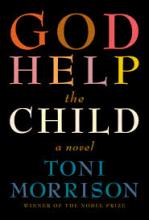
“WHAT YOU do to children matters. And they may never forget.”
This thread runs aggressively through Toni Morrison’s most recent novel, God Help the Child. The speaker is Sweetness, a woman who shares her family’s wounds from trying to pass for white, or “high-yellow,” for generations. Of trying to blend in well enough to drink at fountains, to try on hats in stores, to use the same Bible as whites during ceremonies. When her child and the novel’s focus, Bride, is born black, “midnight black, Sudanese black ... blue-black,” all the advancement Sweetness and her ancestors strove for dies. She loses her husband (who assumes she has been unfaithful), her social standing as a light-skinned woman, and any love for her child. “Her color is a cross she will always carry,” Sweetness says. “But it’s not my fault. It’s not my fault. It’s not my fault. It’s not.”
Bride grows up without the love of a mother’s touch and scorned for being so oddly dark, until she learns to use her color to make herself exotic and marketable. What may seem to be a character living into her identity as a black woman is really a façade in order to regain what was lost because of her skin. Of course, what Bride sees as progress is actually proof that she too has fallen into Sweetness’ obsession with what Morrison described in a recent NPR interview as “skin privilege—the ranking of color in terms of its closeness to white people or white-skinned people and its devaluation according to how dark one is and the impact that has on people who are dedicated to the privileges of certain levels of skin color.” But while race and color as social constructs are themes in the book, they are not explored as deeply or given as much emphasis as childhood trauma.
As in some of Morrison’s other novels, magical realism conveys the battle between the past and the present, the spiritual and the physical, playing a poignant, visceral part in Bride’s journey. Bride goes through a literal metamorphosis, assuming it is penance for gruesome choices she made as a child to feel alive and as an adult to feel powerful. She is numbed to what true progress and success are, constantly trying to put a fragmented identity together until she can no longer get up and must face her trauma and changing body.
The only people in the novel who allow themselves to truly heal are a child named Rain and an ex-convict named Sofia. They speak to the power of self-forgiveness. Too often we carry the shame and hate handed to us by other people’s evil, whether from childhood trauma and abuse or complacency and apathy as adults. While we can and must be held accountable for our own mistakes, we must also be willing to take off the shroud of self-loathing and guilt, and move forward past trauma into self-acceptance and healing. Both Rain and Sofia, young and old, can see the power of blame and regret and refuse to walk that path, while Bride, her lover Booker, and her mother Sweetness will arguably always drag the sins of their forebears behind them.
“What you do to children matters. And they may never forget.”

FOR NON-WHITES born in post-apartheid South Africa, the country promised equal rights and legal freedom. But the first generation of “born frees,” as they are called, also entered a world where HIV/AIDS was destroying their families and communities. Many children and teens were left largely fending for themselves in townships plagued by poverty, disease, and violence.
Author Kimberly Burge, a Sojourners contributing writer, entered this world not as an aid or social worker, but rather on a Fulbright scholarship, to form a writing group for adolescent girls in the township of Gugulethu. Too old for the child-centered programs and too young for adult assistance, the girls were falling through the cracks of established programs. The writing club offered them the opportunity to creatively express their fears, frustrations, and dreams.
To Burge’s credit, the book is not primarily about her or her experiences. She keeps the focus on the girls themselves and the often breathtaking words and thoughts they express in their writing. Burge is not there to rescue them, but rather to help them find their voices. She acts less as a teacher than a peer, encouraging girls to lead the group themselves and prompting them to write about such topics as “I wish I could ...” or “I need to find a place ...”

Raising Themselves
The film Know How, a musical written and acted by foster-care youth, tells interwoven stories of coming of age within a dysfunctional system, the losses and dangers these young people face, and their against-the-odds struggle to persevere. First Run Features
Beyond the Food Drive
In Charity Detox: What Charity Would Look Like If We Cared About Results, Robert D. Lupton asserts that poverty must be addressed “through development, not through one-way giving.” With anecdotes and examples, he explains development strategies such as fund reallocation, reciprocal exchange models, and neighborhood reconciliation. Harper One
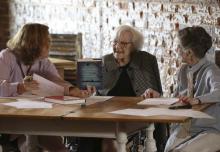
Harper Lee’s “new” book Go Set a Watchman is infused with religious life and Christian moral argument, from its title to its final words.
It’s also a book with splashes of humor, enough Victorian poetry references to send readers scrambling for a Norton Anthology, and Bible allusions as the narrator of both novels, Jean Louise “Scout” Finch, grows up to own her own life.
Examples (spoiler alert!) range from small moments to an epic showdown over race, justice, and sin in which Scout’s father, the saintly Atticus Finch of Lee’s To Kill a Mockingbird, is revealed, as David Gushee writes, as a “polite racist.”

AN OLD Buddy Guy song is titled “First Time I Met the Blues.” I don’t remember the first time I met the blues, but I do remember that I was captivated by the music. For many years now, two of my passions have been listening to blues and studying the Bible. Gary W. Burnett, a lecturer in New Testament at Queen’s University in Belfast, Northern Ireland, and an amateur blues guitarist, shares those passions. This book, he writes in the introduction, is his attempt “to combine in some ways these two passions and to be able to reflect on Christian theology through the lens of the blues.” He succeeds with a well-crafted synthesis of U.S. history, African-American history, the blues, and New Testament scholarship.
Blues music is one of the great contributions of African-American culture to the U.S. While rooted in the oppression of slavery and post-slavery Jim Crow, it speaks meaningfully to the experience of all people. It’s a music that grabs your soul and won’t let go. And Jesus’ Sermon on the Mount is central to his message of life in the coming and present kingdom of God. It can also grab your soul and not let go. By juxtaposing blues lyrics with passages from the Sermon, Burnett shows the common themes that emerge.

MANHOOD SEEMS to be in crisis today, for a host of reasons ranging from silly (a feminized church because of too many altar girls?) to serious (a porn and video game epidemic, alienating boys and men). Carolyn Custis James’ Malestrom gives needed context by pointing this crisis of masculinity back to humanity’s very fall into sin and the patriarchy that sin generated. She calls this patriarchy the “malestrom”—a societal whirlpool that sucks men into a broken way of life and destroys them.
The malestrom is unfortunately familiar to us, although James explores its contours in compelling detail. Sin manifests itself in men through a patriarchal hierarchy that leads us to resort to violence to establish status. The dominant model of what it means to be a man is to father children, provide for them economically, and protect them from the outside world. In light of this, how can we be surprised that we have hurting men and boys in our church who don’t fit in that model?
James tells biblical stories of men who pushed back against the patriarchal order to better reflect the image of God—men and women together in a “blessed alliance” to bring God’s kingdom. These stories culminate in the example of Jesus as the ultimate man who lived fully into a healthy masculine identity.

VATICAN II attempted to change the Roman Catholic Church from an insular and defensive purveyor of 19th century religious practices to one with an incarnational theology and a vigorous recognition that the laity are called to be holy and to participate actively in the Church. Archbishop Raymond Hunthausen tried to live this out in his Seattle archdiocese, making changes that empowered both men and women and trying to build a diocese that was indeed “the people of God.”
A record of this important work and its devastating fallout are at the heart of A Still and Quiet Conscience. Hunthausen’s early years growing up in a close and very Catholic family, attending an old-school seminary, serving at Carroll College and as bishop of Helena, Mont., and now living in prayerful retirement, are interesting bookends. However it is a fearsome Vatican investigation into Hunthausen and its ambiguous result that are the center of this well-researched and helpfully indexed book.
I was angered when I read of the duplicity, divisions, and cover-ups within the Catholic Church in the last years of the 20th century. The “irregularities” cited as the reason for the investigation into Hunthausen were practices also found in other (uninvestigated) U.S. dioceses, such as letting people discuss the ordination of women, allowing unleavened bread at Communion, and allowing the gay rights group Dignity to worship on church grounds.
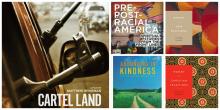
Four August culture recommendations from our editors.